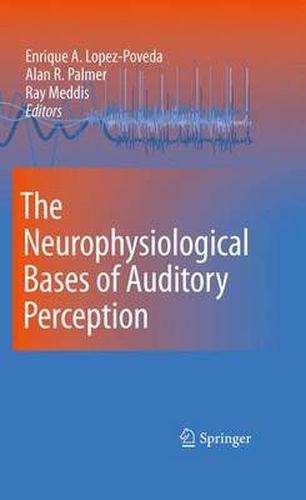Readings Newsletter
Become a Readings Member to make your shopping experience even easier.
Sign in or sign up for free!
You’re not far away from qualifying for FREE standard shipping within Australia
You’ve qualified for FREE standard shipping within Australia
The cart is loading…






This title is printed to order. This book may have been self-published. If so, we cannot guarantee the quality of the content. In the main most books will have gone through the editing process however some may not. We therefore suggest that you be aware of this before ordering this book. If in doubt check either the author or publisher’s details as we are unable to accept any returns unless they are faulty. Please contact us if you have any questions.
This volume contains the papers presented at the 15th International Symposium on Hearing (ISH), which was held at the Hotel Regio, Santa Marta de Tormes, Salamanca, Spain, between 1st and 5th June 2009. Since its inception in 1969, this Symposium has been a forum of excellence for debating the neurophysiological basis of auditory perception, with computational models as tools to test and unify physiological and perceptual theories. Every paper in this symposium includes two of the following: auditory physiology, psychoph- ics or modeling. The topics range from cochlear physiology to auditory attention and learning. While the symposium is always hosted by European countries, p- ticipants come from all over the world and are among the leaders in their fields. The result is an outstanding symposium, which has been described by some as a world summit of auditory research.
The current volume has a bottom-up structure from simpler physiological to more complex perceptual phenomena and follows the order of presentations at the meeting. Parts I to III are dedicated to information processing in the peripheral au- tory system and its implications for auditory masking, spectral processing, and c- ing. Part IV focuses on the physiological bases of pitch and timbre perception. Part V is dedicated to binaural hearing. Parts VI and VII cover recent advances in und- standing speech processing and perception and auditory scene analysis. Part VIII focuses on the neurophysiological bases of novelty detection, attention, and learning.
$9.00 standard shipping within Australia
FREE standard shipping within Australia for orders over $100.00
Express & International shipping calculated at checkout
This title is printed to order. This book may have been self-published. If so, we cannot guarantee the quality of the content. In the main most books will have gone through the editing process however some may not. We therefore suggest that you be aware of this before ordering this book. If in doubt check either the author or publisher’s details as we are unable to accept any returns unless they are faulty. Please contact us if you have any questions.
This volume contains the papers presented at the 15th International Symposium on Hearing (ISH), which was held at the Hotel Regio, Santa Marta de Tormes, Salamanca, Spain, between 1st and 5th June 2009. Since its inception in 1969, this Symposium has been a forum of excellence for debating the neurophysiological basis of auditory perception, with computational models as tools to test and unify physiological and perceptual theories. Every paper in this symposium includes two of the following: auditory physiology, psychoph- ics or modeling. The topics range from cochlear physiology to auditory attention and learning. While the symposium is always hosted by European countries, p- ticipants come from all over the world and are among the leaders in their fields. The result is an outstanding symposium, which has been described by some as a world summit of auditory research.
The current volume has a bottom-up structure from simpler physiological to more complex perceptual phenomena and follows the order of presentations at the meeting. Parts I to III are dedicated to information processing in the peripheral au- tory system and its implications for auditory masking, spectral processing, and c- ing. Part IV focuses on the physiological bases of pitch and timbre perception. Part V is dedicated to binaural hearing. Parts VI and VII cover recent advances in und- standing speech processing and perception and auditory scene analysis. Part VIII focuses on the neurophysiological bases of novelty detection, attention, and learning.